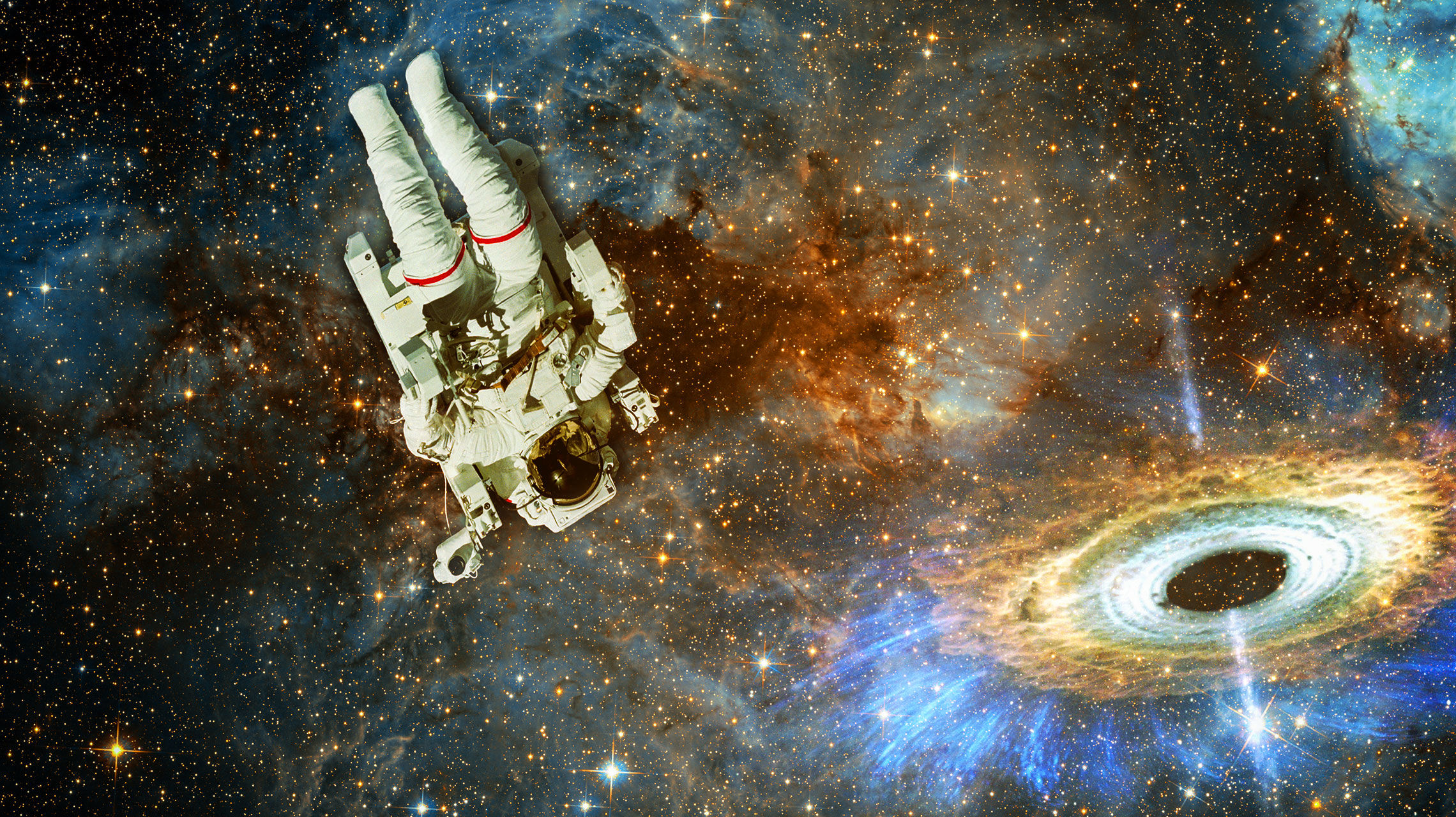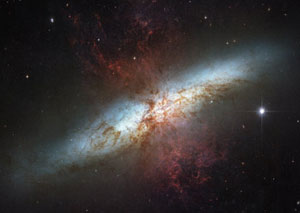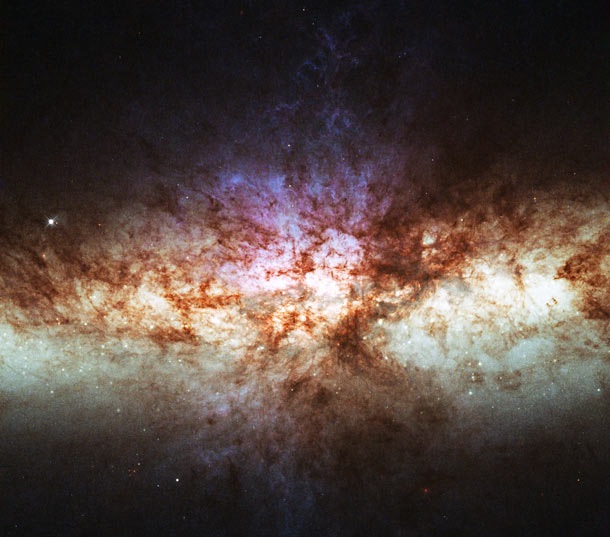Create a free profile to get unlimited access to exclusive videos, sweepstakes, and more!
Sometimes a cigar galaxy is just a cigar galaxy

Astronomical imagery is a tricky business. Different objects behave differently, emitting light in different ways. So, for example, a cool dinky star might give off very little blue light -- through a blue filter it virtually disappears -- while a hot, massive star blasts out blue light. Your choice of filter can drastically change the way an object looks.
Having said that, I recognized right away that this image is the core of the nearby galaxy M82... but it still looks funny to me:
[Click to galactinate, or grab the huge 12.5 Mb image.]
One reason this new image from Hubble looks funny to me is that there aren't as many stars in it as I expect. M82, also called the Cigar Galaxy due to its elongated shape, is pretty close as galaxies go, about 12 million light years away. It's one of the closest large galaxies in the Universe, and a Hubble image usually shows it littered with stars, so closely packed they form a bluish background glow in most pictures.
And while that background of stars is there, it's more diminished than usual because in this image astronomers used a series of filters that accentuate the light emitted by gas. While stars put out this kind of light as well, these filters downplay starlight and crank up the volume on, um, gaslight. Specifically, blue and green are from oxygen, red is from sulfur, and teal is hydrogen. The dark material is dust: long-chain molecules that absorb starlight. They also tend to redden light coming from behind them, similar to the way haze in the air makes sunsets look red.
Clearly, M82 is lousy with gas and dust in its core. That's because it's a starburst galaxy -- it's currently undergoing a fairly violent reproductive spree, cranking out new stars at a prodigious rate. This is probably due to a recent (well, if you can think of a few millions years ago as "recent", which astronomers do) collision with its neighbor M81, a gorgeous full-on spiral galaxy. The gravitational interaction sent gas clouds slamming into each other inside M82, collapsing them and forming stars.
 A lot of these new stars are hot and massive (and blue, right?), blasting out tremendous winds of particles, like a solar wind on cosmic steroids. These combined superwinds are stirring up and blowing out the gas and dust in the galaxy, creating the amazing swirls and tendrils you see here. Young stars also make lots of dust (both when they form and when they die, exploding as supernovae), which is why there is so much of the junk floating in the center of the galaxy. Those tendrils go right out of the galaxy, stretching for hundreds of thousands of light years, as you can see in the inset image from Hubble of M82 from back in 2006 (click to embiggen).
A lot of these new stars are hot and massive (and blue, right?), blasting out tremendous winds of particles, like a solar wind on cosmic steroids. These combined superwinds are stirring up and blowing out the gas and dust in the galaxy, creating the amazing swirls and tendrils you see here. Young stars also make lots of dust (both when they form and when they die, exploding as supernovae), which is why there is so much of the junk floating in the center of the galaxy. Those tendrils go right out of the galaxy, stretching for hundreds of thousands of light years, as you can see in the inset image from Hubble of M82 from back in 2006 (click to embiggen).
Eventually, the starburst will subside, M82 will settle down a bit, and a lot of that gas and dust will travel into intergalactic space. This kind of thing happens all the time out in the Universe, and it's kinda nice we're able to get such a close view of it. Highly-detailed images like this one from Hubble can help us trace the location and behavior of all these baby stars and the turmoil they create.
And what better way to celebrate so many births than with a cigar 40,000 light years long?
Related posts:
- M82 stifles a cosmic belch
- In galactic collisions, might makes right
- M81, up close and personal
- AAS #6: Lonely stars between galaxies



























